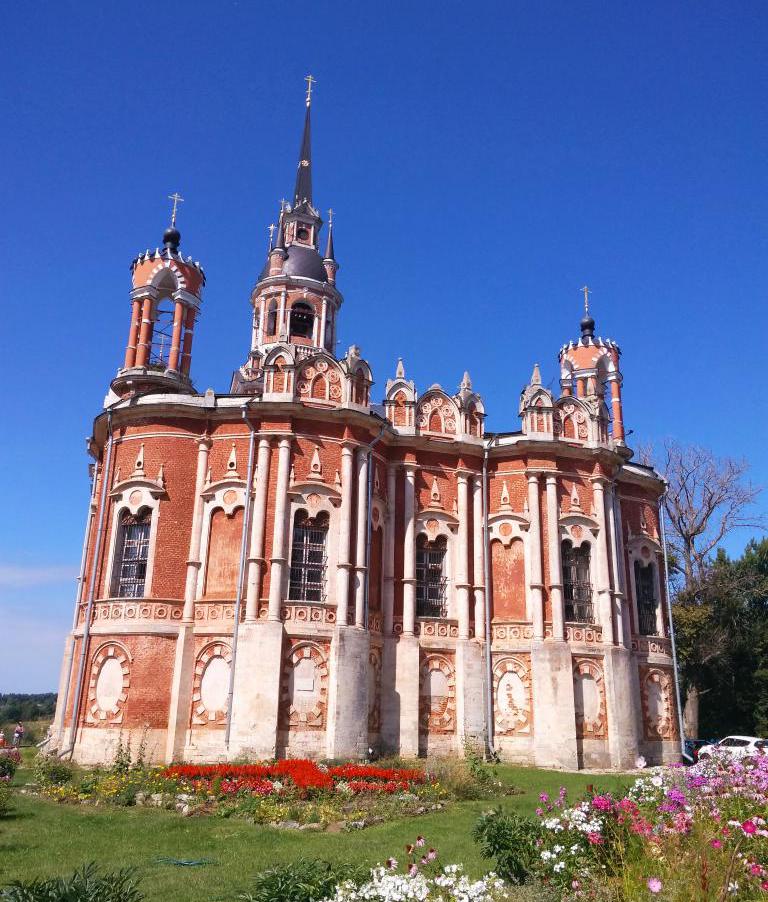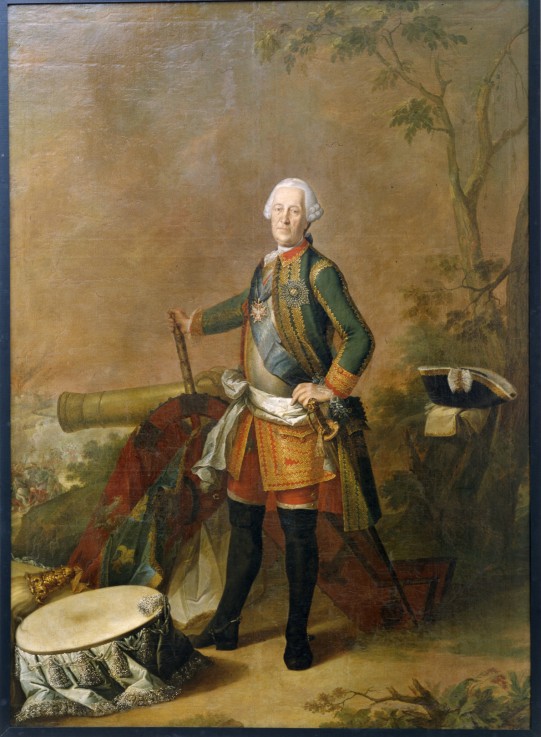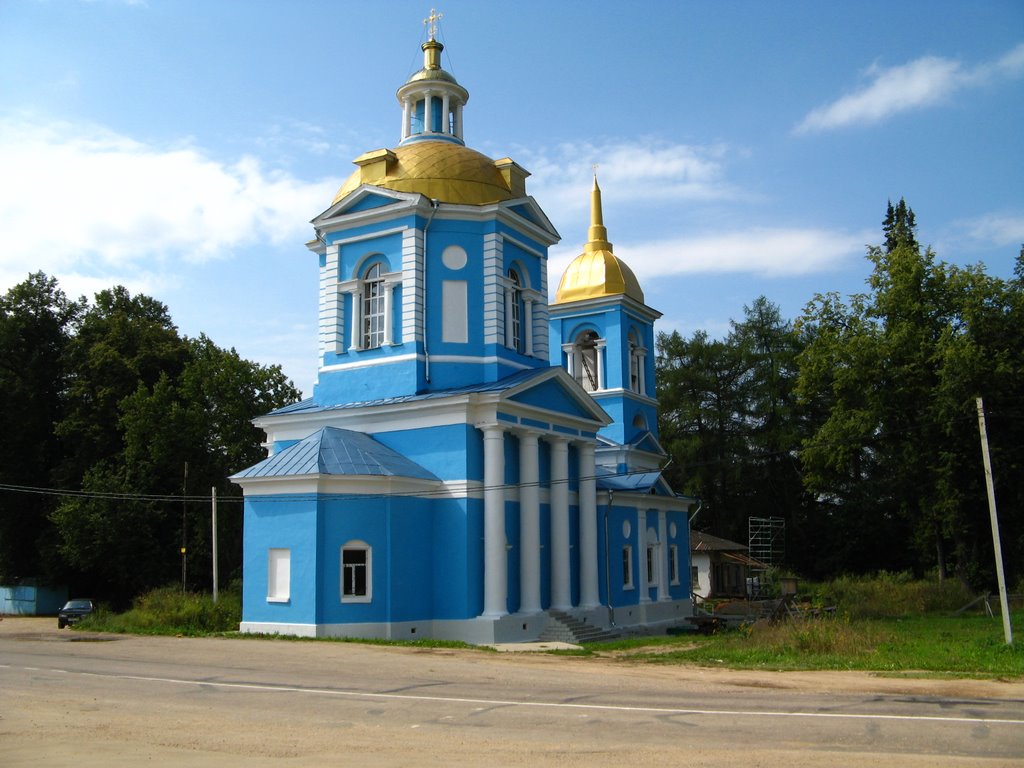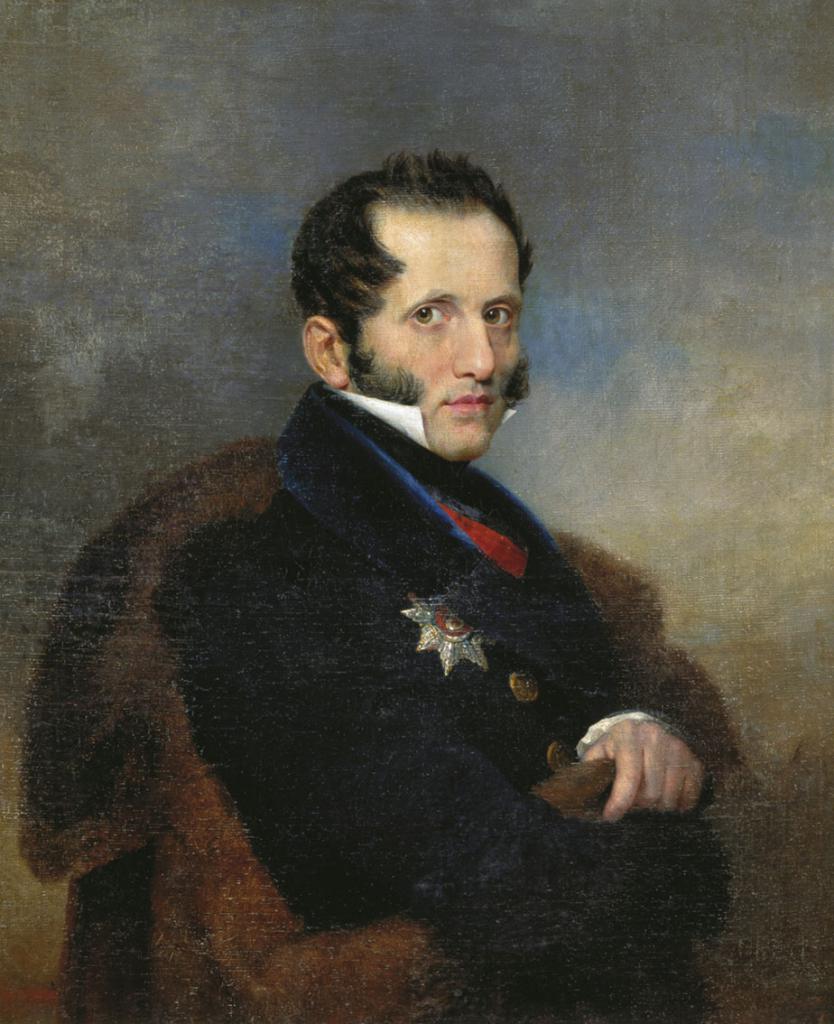Mozhaisk district of Moscow region was created in 1929 and is the most beautiful part of the Moscow region with a rich history, architectural monuments, various natural resources and a large reservoir, supplying drinking water to the capital and the surrounding area. In 2018, the district was transformed into the regional city of Mozhaisk with administrative territory. A popular vacation spot for Moscow residents and tourists from all over the country is visited by 1.5 million people. per year, which is possible due to its convenient location, developed road network, favorable environmental conditions and the rich historical heritage of the past, which is the estate of Porechye, Mozhaisk district.
History of Mozhaisk and its environs
Archaeological excavations and research by scientists indicate the location on the territory of the Troitsky settlement area, now flooded by the reservoir, and the Baltic tribe lived here until the 5th century. n e., called the local river, which flowed into the large Moskva River, "Mozhoya" - "small". Later, at the end of the first millennium, the Slavs who came here used the name for their city. In 1231, Mozhaisk is mentioned in the annals as a defensive fortification in the east of the Smolensk principality. The ancient wooden fortress (detinets) of the city is located at the intersection of trade routes 110 km west of Moscow, on a high landslide hill, at the mouth of the river. Mozhayki and Petrovsky stream flowing into it.
In 1303, the city joined the Grand Duchy of Moscow and became its outpost on the western borders. In the 14th century the fortress withstood the attacks of the Lithuanian prince Olgert twice and unsuccessfully tried to stop Khan Tokhtamysh. In the 15th century Mozhaisk becomes the capital of a specific principality with its mint, stone temples and monasteries, shopping streets and further participates in the fight against Polish-Lithuanian intervention. From a wooden fortress in the 17th century. under the leadership of architect Ivan Izmailov, the stone Mozhaisk Kremlin (1626) grows. To this day, ramparts, a lake, fragments of the Nikolsky Gate, the Kremlin wall, the Old Nikolsky Cathedral (1849 restoration in original forms instead of the destroyed temple of the 14th century) and a magnificent example of Russian Gothic - Novo-Nikolsky Cathedral (preserved) have been preserved from it. 1814) student of Matvey Kazakov, architect Alexei Bakarev, whose multi-tiered bell tower serves as the architectural landmark of the city.

The history of the Mozhaisk district, where the Porechye estate is located, is closely connected with all further military events of the country. Due to its proximity to the Borodino field, where the military history museum was later opened, in 1812 Napoleon’s troops twice passed through the city with fires, and Denis Davydov’s partisans acted around. At the beginning of World War II, the city was the center of the most important 220-kilometer-long Mozhaisk line of defense, underwent a 3-month fascist occupation, and numerous guerrilla groups heroically fought in the region.
Monasteries of Mozhaisk district
Speaking about the memorable places of Mozhaisk land, one cannot but mention the ancient monasteries. One of them - Spaso-Borodinsky Nunnery - was created in 1838 by the inconsolable widow of the hero of the war of 1812, General A.A. Tuchkov, Margarita Mikhailovna Tuchkova, who became tonsured and became abbess, near the place of his death on the Semenovsky redoubt. The other, the Kolotsky Assumption Monastery, was founded in 1413 by the son of the great Dmitry Donskoy, Prince Andrei Dmitrievich Mozhaisky. The third was founded by him in 1408 together with the student of St. Sergius of Radonezh, Ferapont Belozersky - Luzhetsky Ferapontov Bogoroditsky Monastery, the only one of the local monasteries preserved from the Middle Ages.
Manors of the area
The Mozhaisky district has always attracted nobles, manufacturers and merchants with its location, magnificent landscapes and water resources of the Moscow River and small rivers for the construction of suburban residences, which was the Uvarovs estate in Porechye. The statesman P.I. Musin-Pushkin, Chancellor A.P. Bestuzhev-Ryumin, the princes Volkonsky and Korkodinovs, the manufacturer S.I. Gudkov, the noblemen Varzhenevsky, Chernyshevs, Savelovs and Ostafievs, relatives of Empress Catherine I Efimovs started the estates near Mozhaisk. Counts Razumovsky, father-in-law of A. S. Pushkin N. A. Goncharov, father of Denis Davydov V. D. Davydov and many others. Famous architects who worked in accordance with fashion trends in the styles of classicism, empire, Moscow baroque, eclecticism, modernism were invited. In Soviet times, most of the estates were lost, abandoned and turned into ruins, neglected landscape parks and ponds reminiscent of their existence, fragments of old gravestones of manor churches in some places, and only some of the estate's values were preserved thanks to their transfer to museums.
The history of the estate Porechye

For the first time, the village of Conversation-Porechye, 40 km beyond Mozhaisk, on the river. At night, with two churches, it is mentioned in the annals of 1596 as the patrimony of the nobleman M. I. Protopopov, a native of the German family Goletski. In the Time of Troubles, in 1613, an outrageous detachment of Poles or Cossacks ravaged and burned the estate and churches. The Protopopovs, together with the Tatishchevs, owned a sparsely populated, but significant territory estate with 8 peasant households until 1698, until they sold it to the son of the Astrakhan governor, executed by Stepan Razin, Prince B.I. Prozorovsky. He, in turn, being childless, bequeathed in 1718 all his fortune and the modest estate of Porechye in the Mozhaisk district to Tsarina Catherine I. By her decree, Porechye until the death in 1728 was owned by the childless brother of Catherine Fedor (Friedrich) Skavronsky, and in 1730 - Companion of Peter I, after his death during the reign of Peter II and Anna Ioannovna, ruler of St. Petersburg, talented engineer, administrator, commander in the Russian-Turkish war of 1735-1739, Field Marshal Christopher Antonovich von Minih.

Razumovsky Manor
In 1741, Elizabeth Petrovna ascended the imperial throne. She removes from the power all the minions of the previous tsarina, sends Minikh on false charges to be executed, already on the scaffold, replaced by a link to Siberia, and gives the estate Porechye to her favorite and secret husband, a former Cossack singer, also in the future, Field Marshal Aleksey Grigorievich Razumovsky with humor pertaining to his exaltation. He subsequently transfers the estate to his younger brother, the hetman of Little Russia, Kirill Razumovsky. In 1803, his son Lev Kirillovich Razumovsky, who, apart from merit in military service, also married his princess Maria Golitsyna, whom he won in cards from her unloved husband, entered into the inheritance and management of the estate. Being a lover of architecture and land management, the count lays a magnificent architectural and park ensemble on the elevated bank of Inochi instead of the old estate of the 17th century, and instead of the wooden one erects a brick church (1804) in honor of the Nativity of the Virgin in the classical style with a high rotunda, a bow in the form of an arbor and Tuscan porticoes on the sides.

A complex, uneven terrain is occupied by a magnificent landscape park with greenhouses and greenhouses; Poretsky garden institution is being created. In 1818, the estate was inherited by the niece of Lev Kirillovich maid of honor Queen Elizabeth Alekseevna Ekaterina Alekseevna Razumovskaya, who in 1816 became the wife of Count Sergei Semenovich Uvarov and brought to the dowry of the estate. So until 1917 they became the owners of the estate Porechye Uvarov. Destroyed by the French in 1812, the estate began to be rebuilt by the new owner in the 1830s.
Sergey Semenovich Uvarov

Count Uvarov Sergey Semenovich (1786-1855), according to the great reformer M. M. Speransky, “the first Russian educated man”, was born in the family of the adjutant of Prince G. A. Potemkin, Colonel Semyon Fedorovich Uvarov and became the godson of Catherine the Great. At the age of two, he lost his father and was brought up by a relative of the mother of Prince Kurakin. He received an excellent education, including a specialist in ancient and modern languages and European culture. In the years 1801-1810. served in the Ministry of Foreign Affairs, was a diplomat in Vienna and Paris. He was friends with Batyushkov, Zhukovsky, Karamzin, Goethe. Published a number of scientific works in European languages on philology and antiquity. In 1811, Mr .. became an honorary member of the Imperial Academy of Sciences, from 1818 until his death - its president and member of the State Council. In 1815, S. S. Uvarov was one of the founders of the progressive literary circle "Arzamas", where he received the cheerful nickname Starushka. It is noteworthy that another member of the society - A. S. Pushkin, nicknamed Cricket - did not sympathize with him, considered Uvarov a careerist, an acquirer, and even subsequently wrote a scandalous epigram on him that reached the tsar. In 1839, he founded the Pulkovo Observatory as president of the Academy of Sciences. In the years 1833-1849. - Minister of Education, reformer of education and at the same time chairman of the censorship department, an opponent of French novels. As Minister of Education, he presented to Emperor Nicholas I, shocked for life by the Decembrist uprising, a report on the education of his subjects in the spirit of “Orthodoxy, Autocracy, Nationality” (Uvarov’s triad) as opposed to the slogan of the French Revolution “freedom, equality, fraternity”. In 1853 he defended his master's thesis on the origin of the Bulgarians. Published in the journal "Contemporary".
Poretsky Museum
A versatile, non-poor man, Sergei Semenovich approached the idea of rebuilding the estate near Moscow very thoroughly. By 1837, a stone 2-storeyed mansion in the classical style was built in the estate of Porechye according to the project of the talented architect D.I. Zhilyardi with a portico based on 8 columns. Semicircular galleries led from the palace to two empire-style wings. The building was crowned by an original glass belvedere, which serves to illuminate the central room of the Poretsky Museum with magnificent collections of coins, rare books and antiques.

The estate has become an important center of cultural life in Russia. "Academic conversations" were held here, bringing together in a laid-back circle professors, academics, and historians who were attracted by the rich and unique museum collections, hospitality, and the master's education. The German artist Ludwig Peach left several images of the magnificent interior decoration of the house with decoration by architect Siluyanov and the museum, the pearl of the ancient collection of which was a 150-pound marble carved sarcophagus of the 2nd-3rd centuries. n e. (now located in the Pushkin State Museum of Fine Arts), acquired by the Count from the family of a Roman cardinal.
A small house was built for Uvarov’s friend V.A. Zhukovsky, a school was opened for the courtyard children of Porechye through the efforts of the Count, and a cloth and paper spinning factory was erected near the estate, which was part of the then-modern “Poretskaya Saving”.
Tyurmerovsky forest
The talented arborist and experimenter Karl Frantsevich Tyurmer accepted in 1853 the invitation of S. S. Uvarov to work for 3 years on the neglected forest lands of the count, he moved to the Porechye estate with his family from Germany and stayed here for almost 40 years. His initial work consisted of sanitary cutting, laying of dirt roads and reclamation work. Then, since 1856, already under Alexei Sergeyevich Uvarov, who enthusiastically met the ideas of his forester, the first plantings of a unique man-made forest began, distinguished by high productivity and sustainability, combining 90 species of local trees and shrubs with exotic plants. Larch, pine, thuja and spruce of the Türmer forest on 1130 ha have remained to this day a magnificent man-made reserve of the Moscow region.
Manor under A. S. Uvarov
In 1855, Count Sergey Semenovich died, Alexei Sergeevich Uvarov (1925-1884), the only son and successor of museum work, the creator of the Moscow Archaeological Society and the State Historical Museum, became the heir to Porechye. New collections of Russian antiquities and archaeological finds no longer contained manor rooms, and the palace underwent further restructuring. The front porch is attached to the northern facade in the old Russian style, the southern park facade acquires Italian antique features with a portico, centaurs and caryatids. The plan of the household yard of the Porechye estate was developed by architect M.N.Chichagov, the project of the courtyard in the form of an Italian patio and small decorative structures belonged to the architect A.P. Popov. The magnificent Triton fountain - an exact copy of the Roman in Barberini Square, made in Berlin - had an elaborate water supply from the pond through pipes to the palace’s belvedere, and then to the fountain, which beats due to the elevation. Another impressive building in the park is the "Holy Spring" - a Constantinople copy of the grotto with the image of the Savior Not Made by Hands and a marble pool in front of it, from where a wonderful view opens up. In the beautification of the estate and passion for archeology, Count Alexei Sergeyevich was supported by his wife Princess Praskovya Sergeevna Uvarova (Shcherbatova).
The estate in the late XIX - early XX centuries
The last owner of the estate in Porechye was Count Fedor Alekseevich Uvarov (1866-1954), a graduate of Moscow University, a member of the archaeological expeditions of his mother, Princess Uvarova, and the author of scientific works, a member of the Moscow Archaeological Society. As a student, he enrolled in the Terek Cossack army and, leaving the university, served in the 1st Sunzhensk-Vladikavkaz Cossack regiment.
Having resigned in 1891 with the rank of coronet and having married Princess E.V. Gudovich, he settled in the Porechye estate allocated by his mother for the division of property. He superbly developed the Poretsky garden institution, bred many new varieties of fruits, vegetables and flowers, successfully engaged in pedigree animal husbandry, received 401 awards for his work, including becoming a supplier of the imperial court, holder of diplomas, medals and prizes at various agricultural exhibitions. The seed fields of Fedor Alekseevich supplied the whole of central Russia. He also became the successor of his ancestors in the public field - he built roads as the chairman of the Mozhaisk Zemstvo Administration, and at his own expense - a hospital that has survived to this day. The Porechye estate still attracted famous representatives of Russian science and culture with the hospitality of its owners and museum collections, which were constantly replenished, including a collection of fine art by the great masters of Tiepolo, Fragonard, Kiprensky and others. With the outbreak of the First World War, F. A. Uvarov went to the front with the rank of cornet, where he commanded a Cossack hundred.
The Poretsky Museum was lucky. After the revolution of 1917, a significant part of the magnificent collections of paintings, sculptures, archaeological materials and 100 thousand books were transferred to the History Museum and the Pushkin Museum. A.S. Pushkin in Moscow.
The current state of Porechye
In the war years of the Great Patriotic War, the old manor was heavily destroyed and partially restored in the 1970s. according to the project of the architect-restorer Neonila Petrovna Yavorovskaya, who rediscovered a unique monument of estate culture, which has republican significance, to house a sanatorium and a pioneer camp here. The negative processes that took place during the era of perestroika, in particular the creation of a self-supporting woodworking enterprise here, led to yet another destruction of the Porechye recreation complex.
Now the territory and buildings are leased to the departmental sanatorium, which carried out large restoration work of the palace buildings. Their result is captured in a few modern photos of the Porechye estate.
Free access to the territory is limited, buildings can be seen from afar from the side of the pond. And only a separate standing manor church of the Nativity of the Virgin allows you to plunge into the atmosphere of the once popular Russian estate.
How to get to the estate of Porechye
Address: Moscow region, Mozhaysky district, the village of Porechye.
Directions:
- To the bus station "Mozhaysk", then by buses 31, 37, 56 to the stop "Porechye".
- To the Belarusian railway station Uvarovka, then by bus 56 to the stop "Porechye".